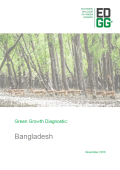
This report seeks to generate evidence on the binding constraints to shifting Bangladesh’s current economic strategy to one aiming at green growth. Specifically, it is critical that Bangladesh decouples its economy from the negative environmental effects of the economic growth path it is currently pursuing. It is important that green growth is pursued in order to unlock Bangladesh from its unsustainable growth path to a more sustainable and inclusive one.
This paper uses a novel approach which has not been trialled elsewhere- the Green Growth Diagnostic. This methodology will help Bangladesh develop its strategy to pursue an economic growth path that takes full account of natural resources and promotes sustainable development. This report will demonstrate and highlight the constraints that need to be addressed in order to do so.
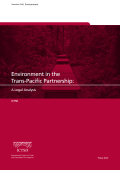
The 12 Pacific Rim countries that have signed the Trans-Pacific Partnership – Australia, Brunei, Canada, Chile, Japan, Malaysia, Mexico, New Zealand, Peru, Singapore, the United States, and Vietnam – are vulnerable to environmental stress, but also strategically well-positioned to address many of these issues through trade policy. Indeed, the TPP includes a comprehensive environment chapter that affirms the parties’ “strong commitment to protecting and conserving the environment” and stipulates both general commitments and substantive obligations. For example, it reaffirms parties’ commitments to a number of multilateral environmental agreements, takes an important step in advancing efforts to restore and sustainably develop fisheries, and is the first trade agreement to address fisheries subsidies. Whereas climate change is not explicitly referenced, energy efficiency, renewable energy, sustainable infrastructure development, and deforestation are listed as areas of interest for potential transnational cooperation.
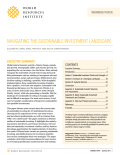
A new paper by World Resources Institute finds strong interest and opportunities for sustainable investing within the US institutional investor marketplace. But key barriers persist.
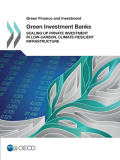
This report provides the first comprehensive study of publicly capitalised green investment banks (GIBs), analysing the rationales, mandates and financing activities of this relatively new category of public financial institution. Based on the experience of over a dozen GIBs and GIB-like entities, the report provides a non-prescriptive stock-taking of the diverse ways in which these public institutions are catalysing private investment in low-carbon, climate-resilient infrastructure and other green sectors, with a spotlight on energy efficiency projects. The report also provides practical information to policy makers on how green investment banks are being set up, capitalised and staffed.
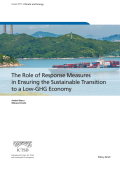
The increasingly interconnected nature of the global economy means that the impacts of climate change mitigation measures, or response measures, are not confined within the borders of countries implementing them. Such impacts will become of even more and growing importance under the decentralised and increasingly ambitious new climate regime. This policy brief explores the issue of response measures in the context of the post-Paris climate regime from a practical and policy-relevant perspective, examining different options on how the issue may evolve.
